Despite being the third largest city in Japan, Osaka offers considerably less than the two cities previously mentioned, and a couple of days should be more than enough to see the most important things.
Osaka Castle stands out. It is a place where, as well as visiting the fortress, you can spend a pleasant time in the park where it is located, which is very popular with both the Japanese and tourists.
The Namba area is also an interesting place where, when you manage to find a spot among the crowd, you can take a photo in front of the famous Glico man sign, or eat your fill of Okonomiyaki at Dotonbori.
Osaka was originally an important commercial and transport centre in the Edo period (17th-19th centuries) and has since been crucial to the Japanese economy, shown by Osaka Castle, a symbol of power and government.
Today, the city is known for its lively shopping districts and culinary scene, as well as attractions such as Universal Studios Japan.
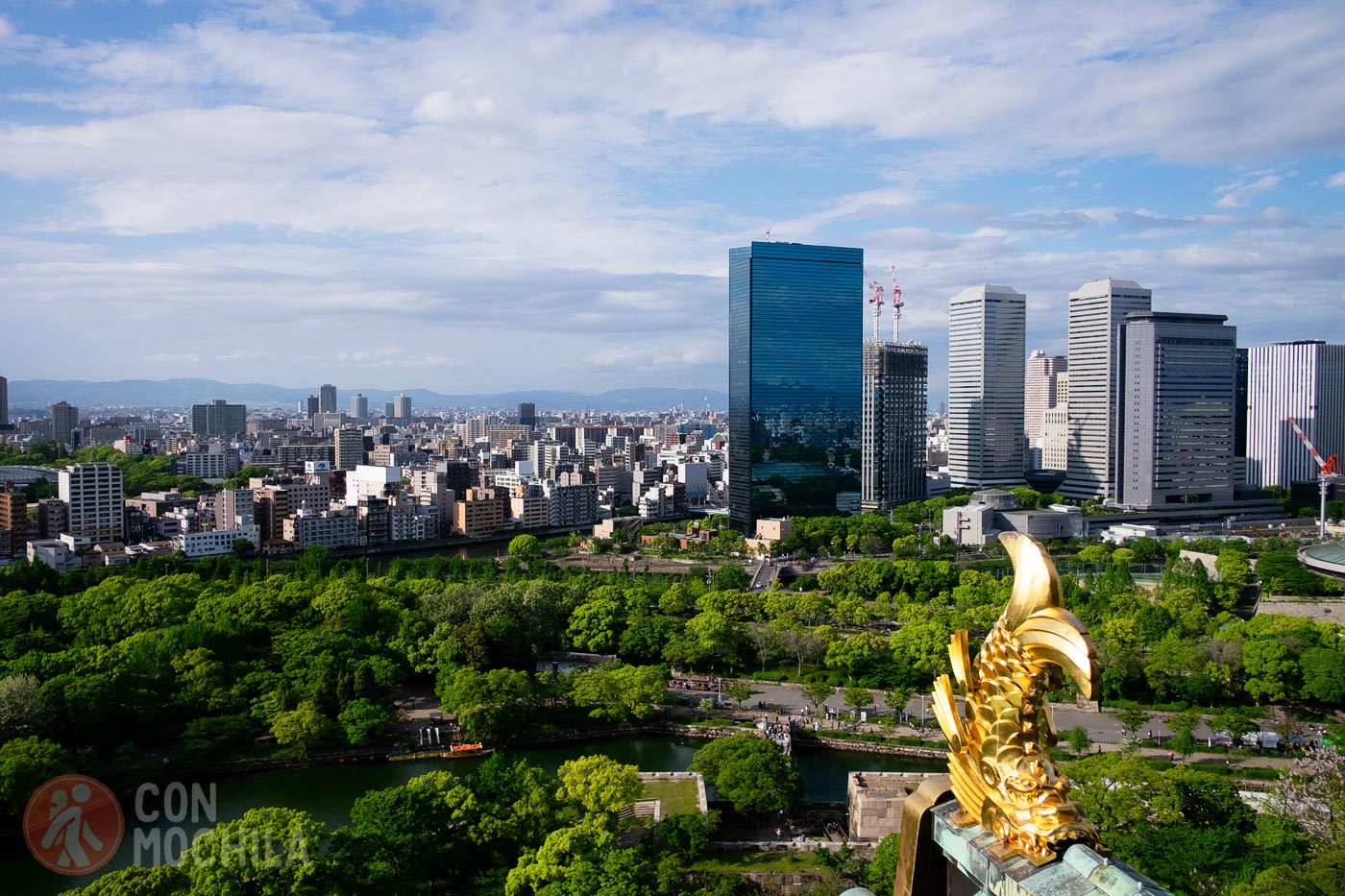
Osaka is located in the Kansai region, very close to Kyoto, so it has a very similar climate. The city experiences four seasons and below they are explained so you can decide the best time to visit.
European citizens, along with those from many other countries, do not need a visa to visit Japan for tourism purposes. You can find detailed information in the previous link regarding the requirements for obtaining the stamp that allows you to up to 90 days.
It goes without saying how important it is to travel to Thailand with a good insurance. We were the first ones to offer the famous 5% discount on IATI Insurance, but you also have it available with Heymondo Travel Insurance.
Follow the links below to get a discount on their website:
While many hotels, guesthouses, and restaurants in Japan offer free Wi-Fi, some travelers prefer or need a constant connection.
We’ve included details on obtaining a eSIM Japan card and make the most with its affordable prices. Now also with information about eSIM Japan with unlimited data.
Kansai International Airport (KIX) is the main entry point to Osaka, connecting with two train lines to reach the city. Domestic flights usually arrive at Osaka International Airport (ITM), where you can take the monorail or connect with other train lines to reach central Osaka.
There are trains in all directions to and from Osaka, most of them stopping at Shin-Osaka Station north of the center. Remember that if you plan on covering a lot of train mileage, it may be worth getting a Japan Rail Pass.
Buses are a very cheap option for traveling. Due to there being numerous companies offering the route from Tokyo to Osaka, tickets are quite cheap.
To get to Osaka from Tokyo you have several options, from trains (about 2 and a half hours) to buses (about 7 hours of travel) to a plane to Osaka. Tokyo station is just under 2 and a half hours away by bullet train (shinkansen) to Kyoto station.
Osaka is located very close to Kyoto, just 15-30 minutes by train. In addition, the two cities are connected by regular bus lines. If you take the bus, the time may vary depending on traffic.
Built in 1598, Osaka Castle (Osaka-jō) is one of the most famous castles in Japan, especially for its importance during the Azuchi-Momoyama period in the 16th century. It consists of 8 interior floors and 5 exterior floors built of stone and the tower is lined with gold leaves on the sides. It is located in a public park so it is ideal for walking, visiting the tea house, or the beautiful Nishinomaru gardens where locals have picnics.
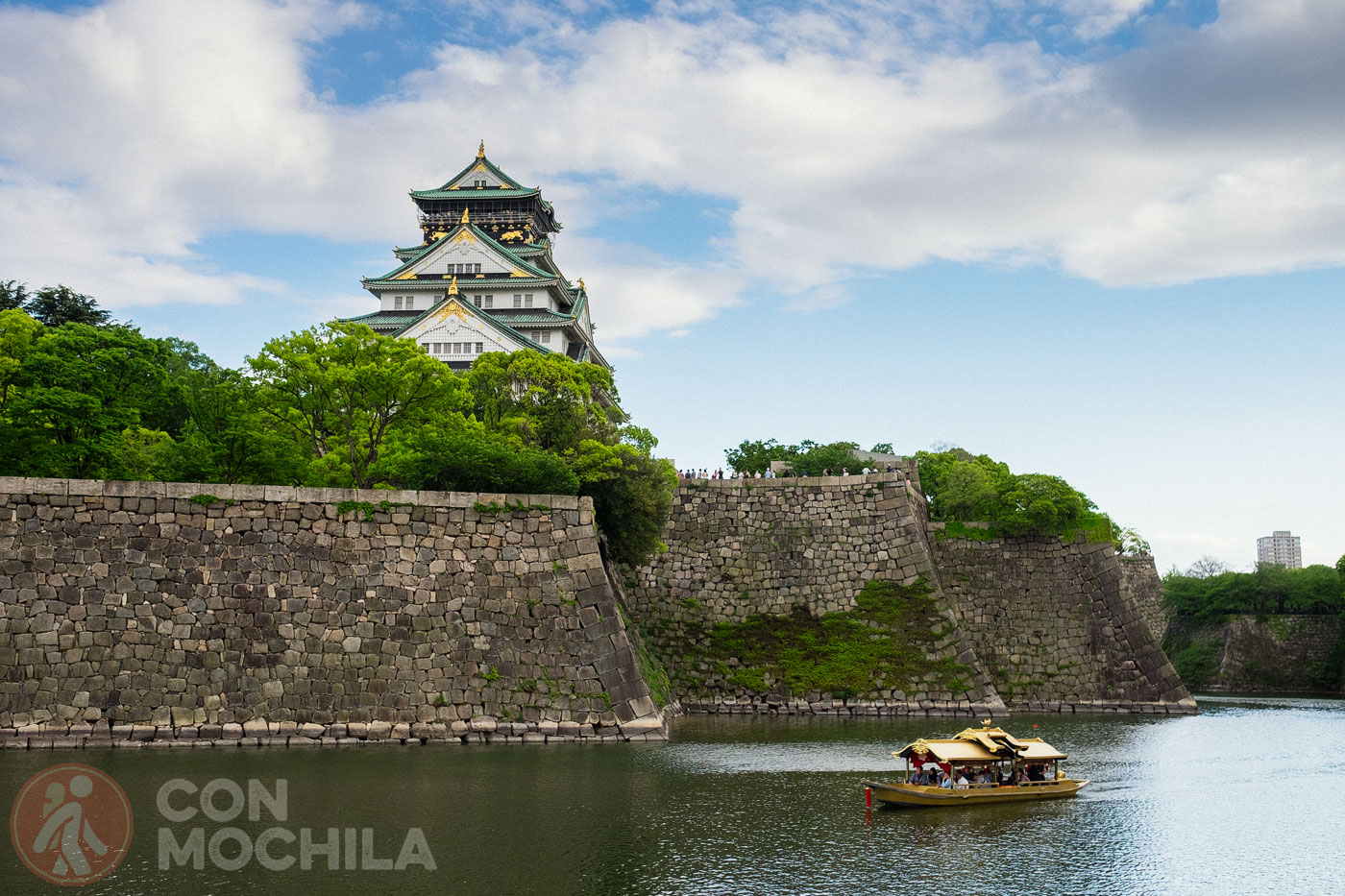
The castle went through several reconstructions until it was restored to its original state in 1995 and, judging by the number of visitors, it should be on everyone’s must-see list.
The Namba area can be reached via the subway stop of the same name. Here you will find three areas: Shinsaibashi, a 600-meter-long shopping mall, Dotonbori, a street full of restaurants along a river or canal of the same name, and Otaroad where game and video game lovers can enjoy numerous themed shops.
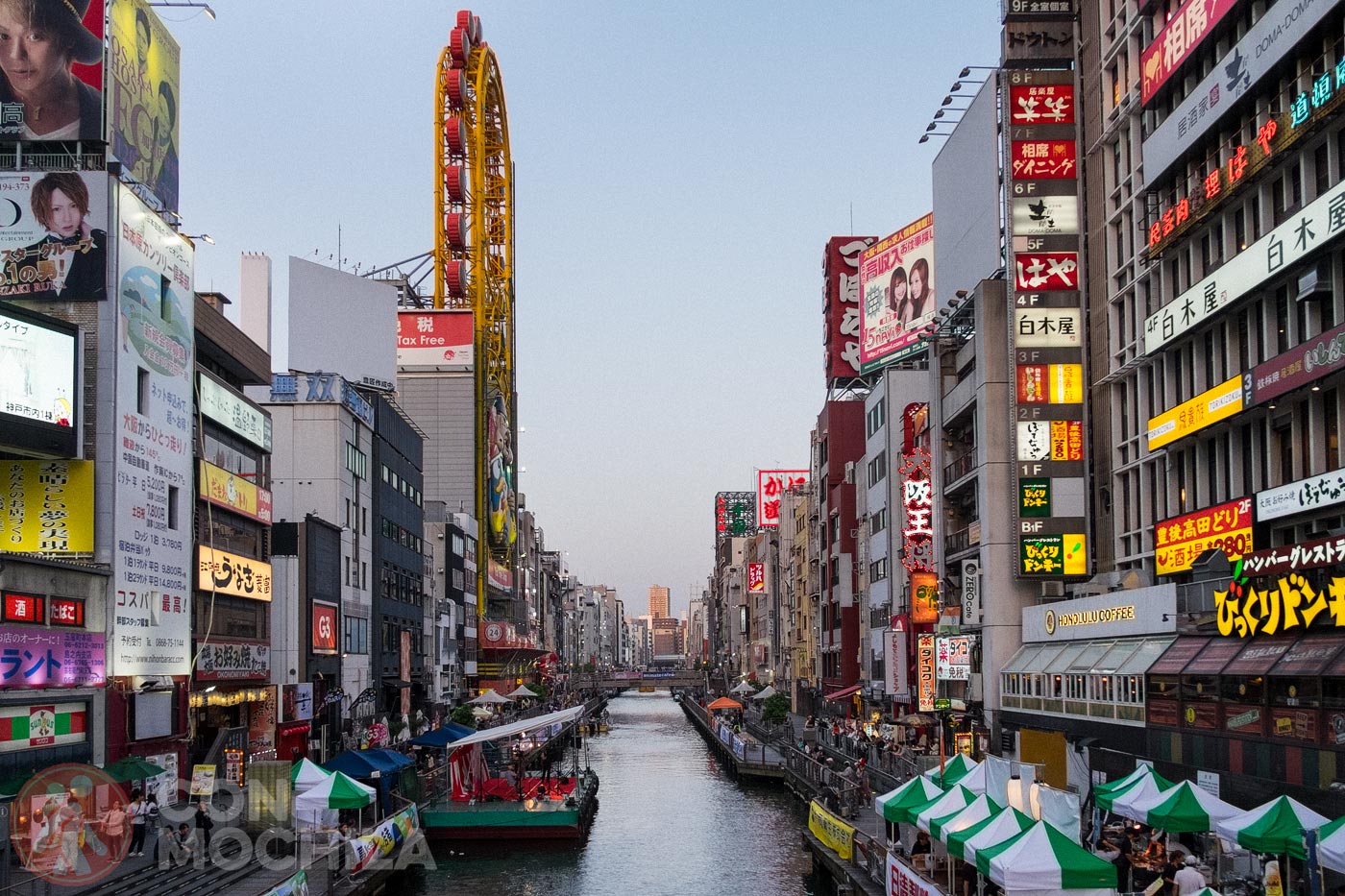
If you are also looking for electronics, you can find good deals in Nipponbashi.
Dōtonbori is a street located in Namba (Minami). It comes from the name of an old canal that runs through it and is the epicenter of a very touristy pedestrian area (we can attest to that) and full of shops and restaurants. From the Ebisu-bashi bridge you will have a spectacular panoramic view of this famous neighborhood where at night you can enjoy the many lights of its signs, including the famous Glico Running Man.
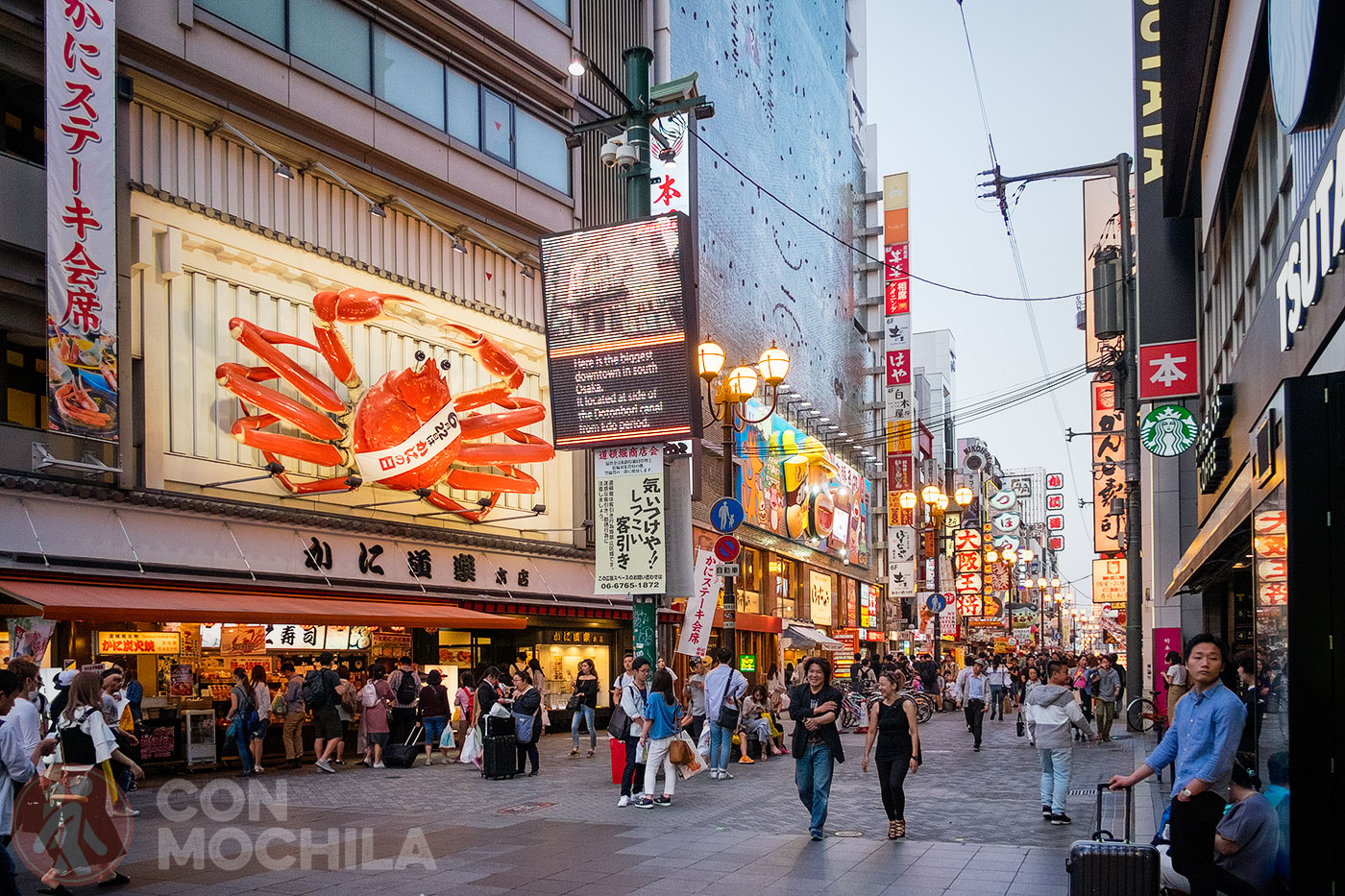
If you are in the mood for something to eat, we recommend finding somewhere to try okonomiyaki.
In 2003, the Osaka Museum of History opened with large-scale visual exhibits telling the story of the city from the time when it was the capital of Japan, to the present day.
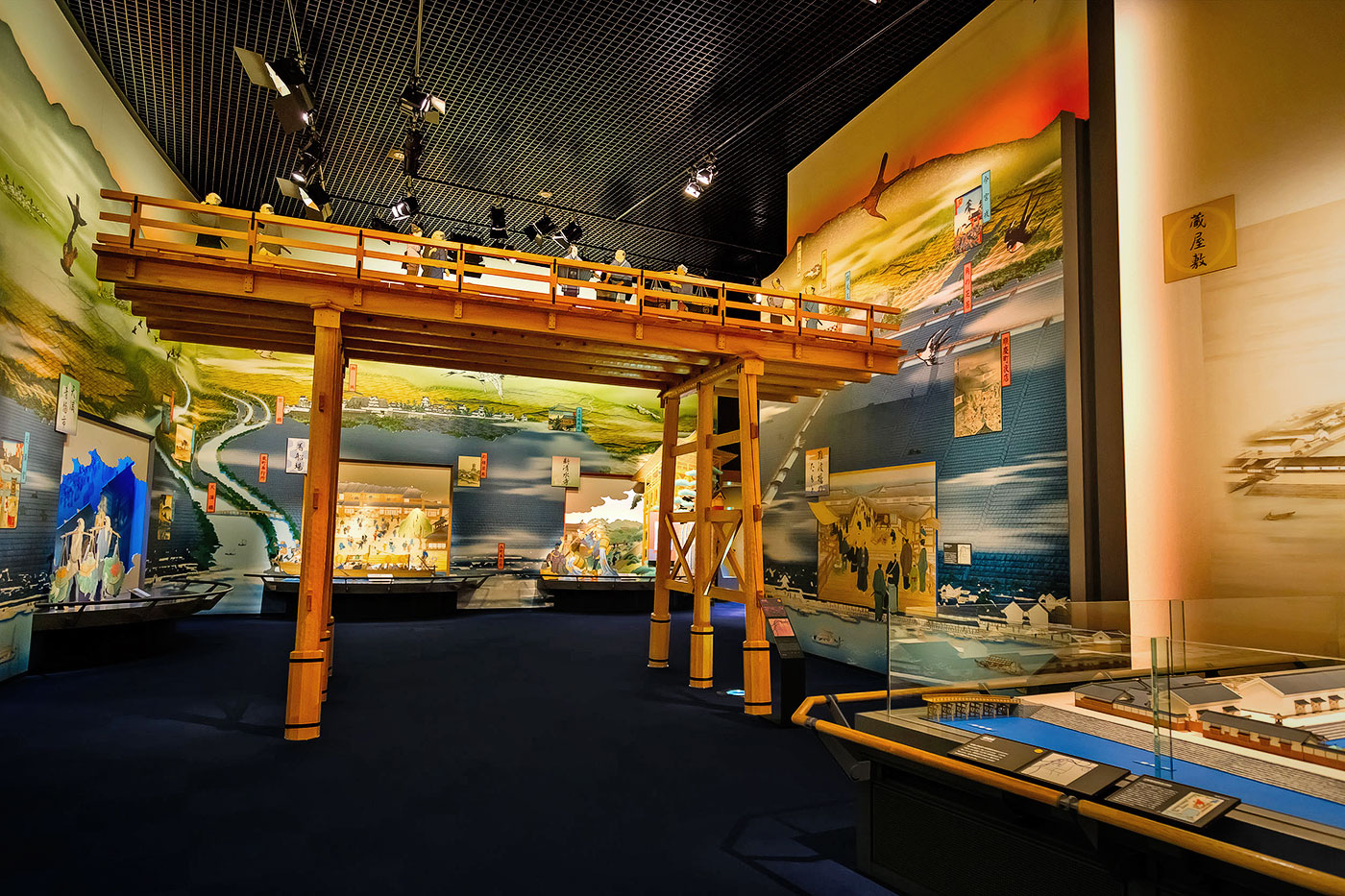
Just a few meters from Osaka Castle and the former site of Naniwa Palace, visitors can discover the interesting history of Osaka through permanent and temporary exhibitions.
Sumiyoshi Taisha Shrine is one of the oldest shrines in Japan and the most famous of the more than 2,000 Sumiyoshi shrines in the country.
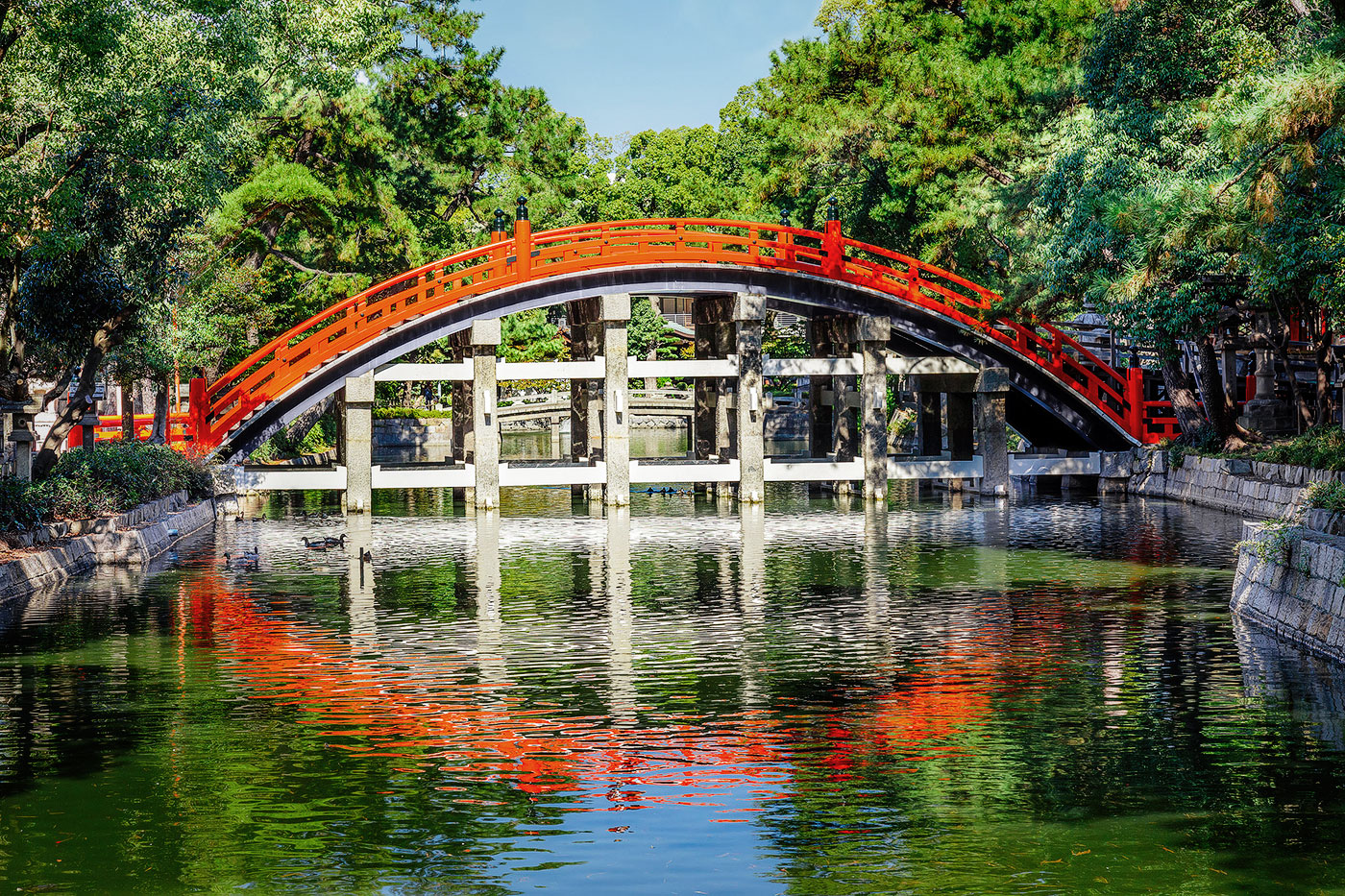
It was founded in 211 during the reign of Emperor Chuai by Tanomi no Sukune, a member of a powerful family in the region, in order to protect travelers, fishermen and sailors.
Osaka Bay Area is a collection of artificially created islands and peninsulas. At Tempozan Harbor there is a Ferris wheel, a food theme park where you can try typical dishes, and Mount Tempozan. Despite being called a mountain, Mount Tempozan only rises 4 meters above sea level.
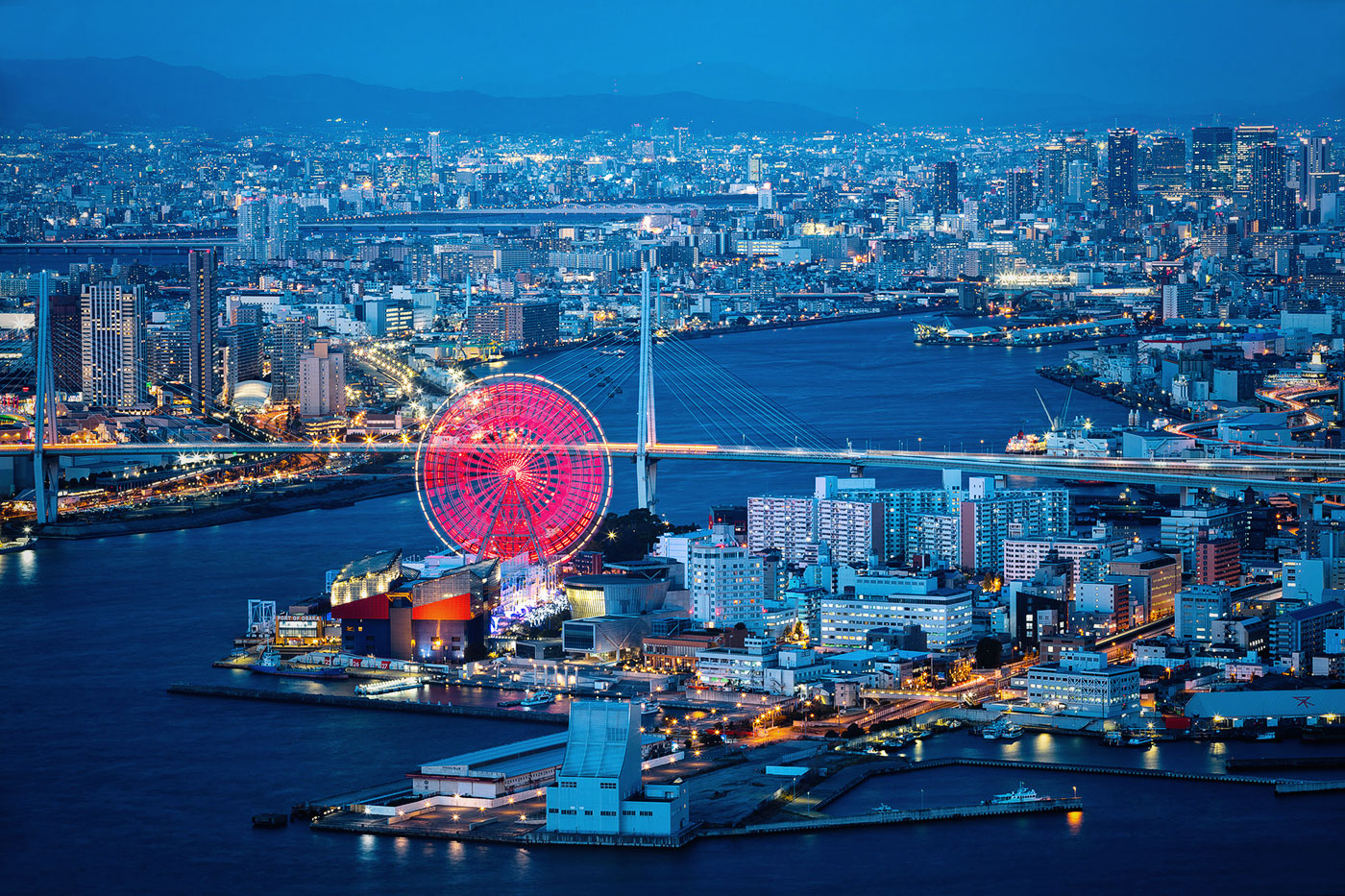
On Sakishima Island there is a bird sanctuary and the Cosmo Tower, which houses shops, offices and an observatory on the 55th floor.
On Sakurajima Island there is a theme park known as Universal Studios Japan, with attractions inspired by Jurassic Park, Spiderman, and Terminator.
One of Osaka’s most famous landmarks, the Glico running man, is a giant illuminated sign found in Dotonbori. Glico is a candy and confectionery company founded in 1922 in Japan.
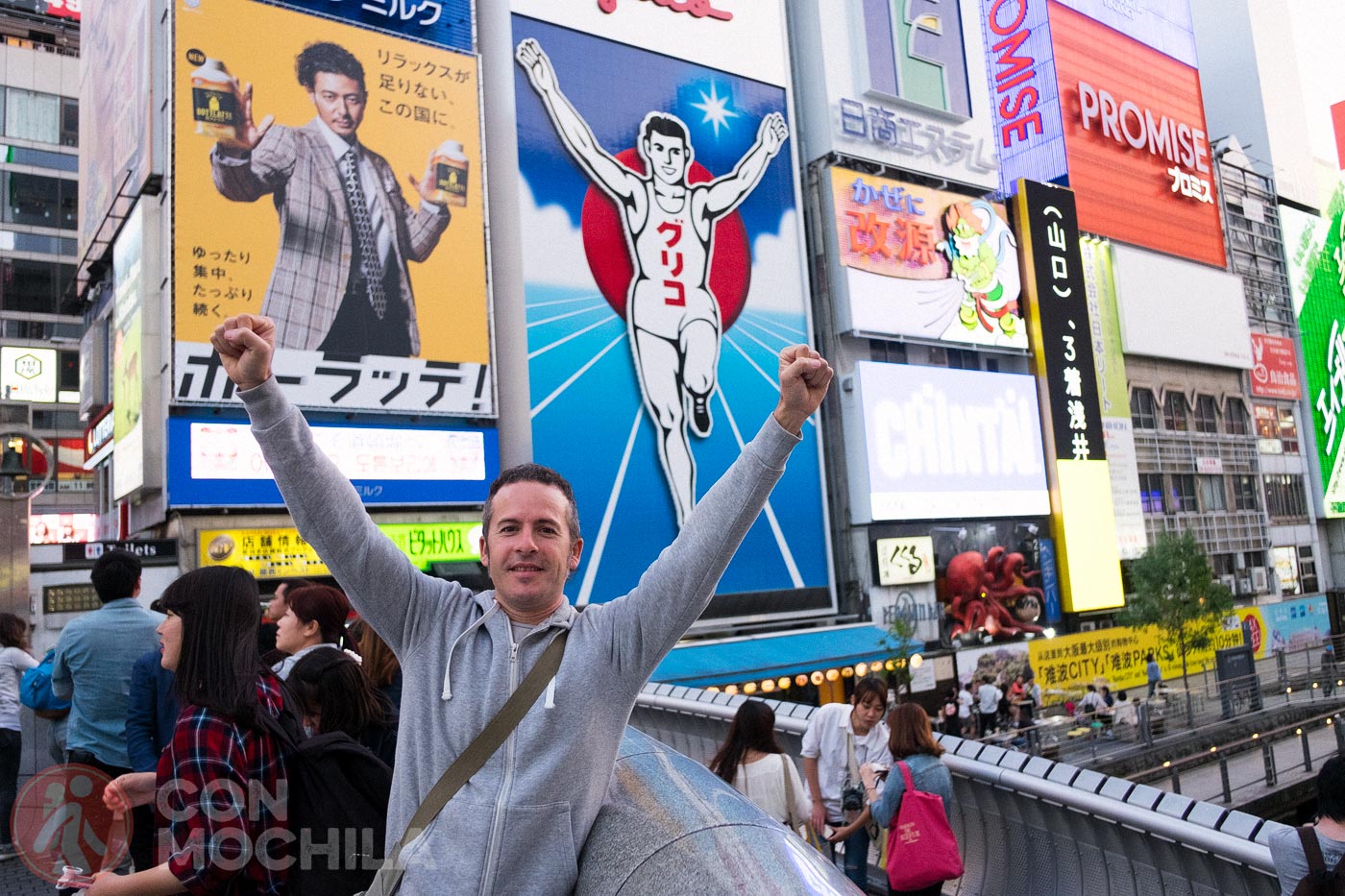
Its creator added oyster glycogen to its sweets, a substance that provides energy for running “300 meters at a stretch.”
Nakanoshima Park is located on an island between the Dojimagawa and Tosaborigawa rivers. It contains a garden with more than 4,000 roses that bloom during the month of May, as well as a beautiful botanical garden across the bridge, in the same island area.
Surrounded by tall buildings, this garden is like an oasis within the restless city.
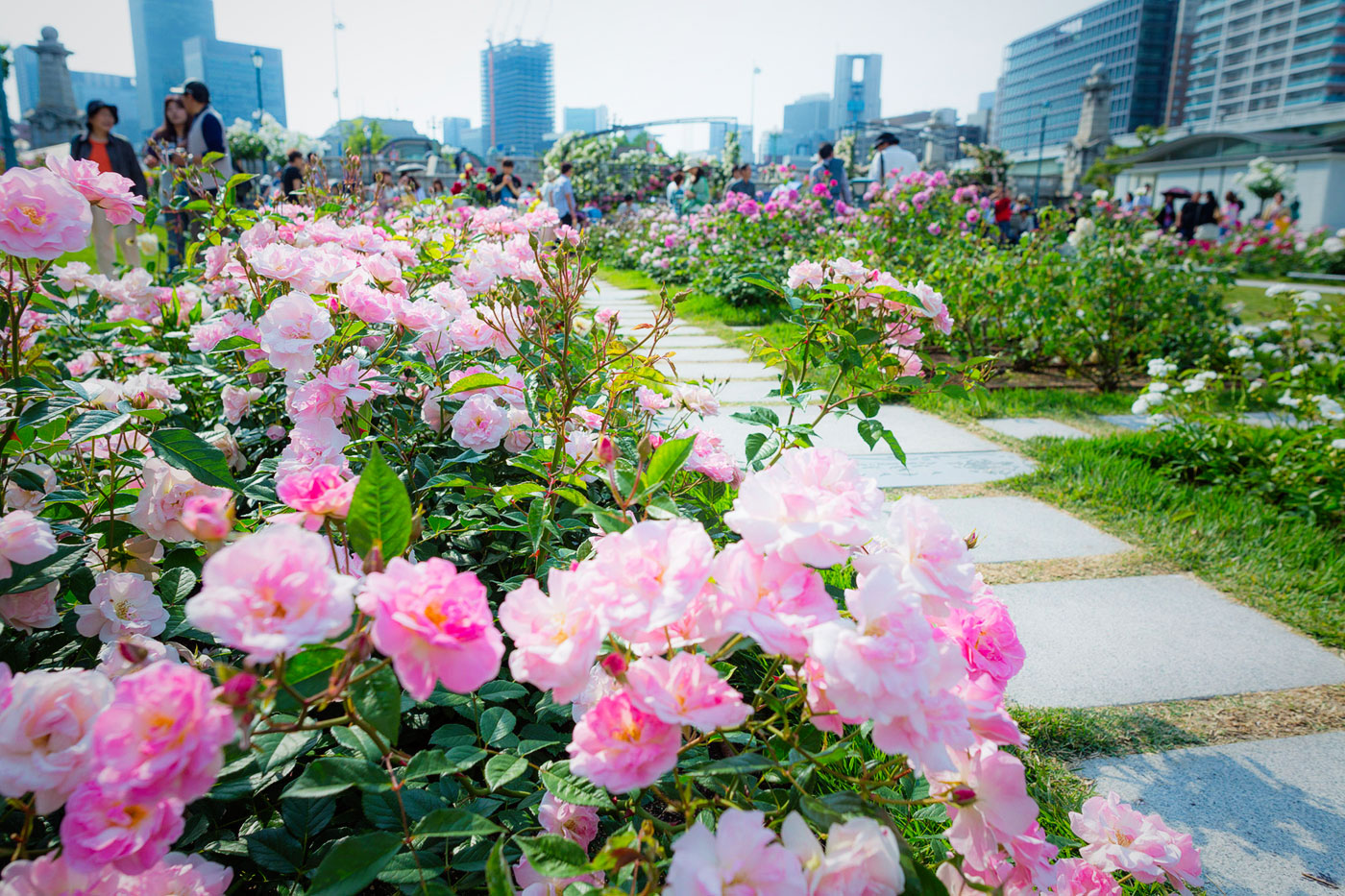
It was the first public park opened in Osaka in 1981 and featured a café and the only hotel at the time that accommodated foreign visitors.
If you’re a foodie, Osaka’s Kuromon Market, established in 1902, is the place for you. Among the 25 small restaurants you can try delicious noodles, curries and seafood.
As well as finding ready-made dishes, it’s the most frequented market by Osakans and local chefs for its fresh fish and seafood, although you can also find fruit, vegetables and meats.
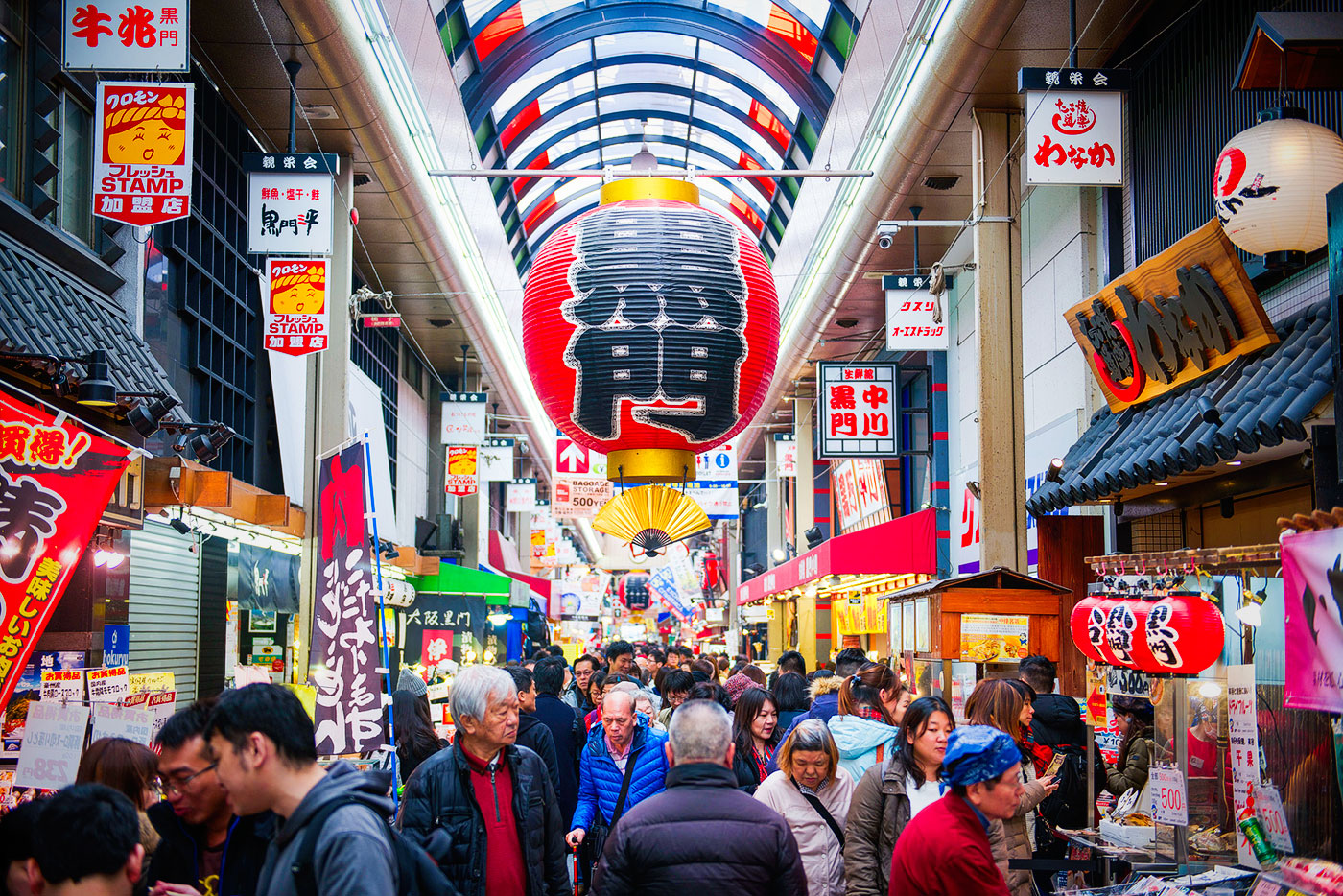
Kuromon Ichiba is located a few minutes walk from the Nippombashi and Kintetsu Nippombashi subway stations. Here is a link if you fancy taking a food tour in Kuromon:
After visiting Hideyoshi Castle or the Shinsekai district, on this Walking Tour to Local Gems, Food & Culture, you will find manga and anime products in the otaku district of Nipponbashi and you will stop to eat at a local restaurant or street stall. You’ll have about 8 hours on the tour to explore Dotonbori, starting from the moment you’re picked up at the hotel.
They say that when night falls, Osaka transforms. For three or four hours, accompanied by a guide, you can discover some of the city’s hidden gems, complemented by dinner at a restaurant or sampling okonomiyaki on this night tour of Osaka.
If you want to escape the hustle and bustle of a city like Osaka, the quasi-Minoo National Park, a forested area just outside the city, is one of the best options. It can be reached by subway in about 25 minutes from the city. Once in the park, the main path is very quiet.
It is paved and stretches for 3 km to Minoo Waterfall, passing temples such as Ryuanji Temple and some small shops.
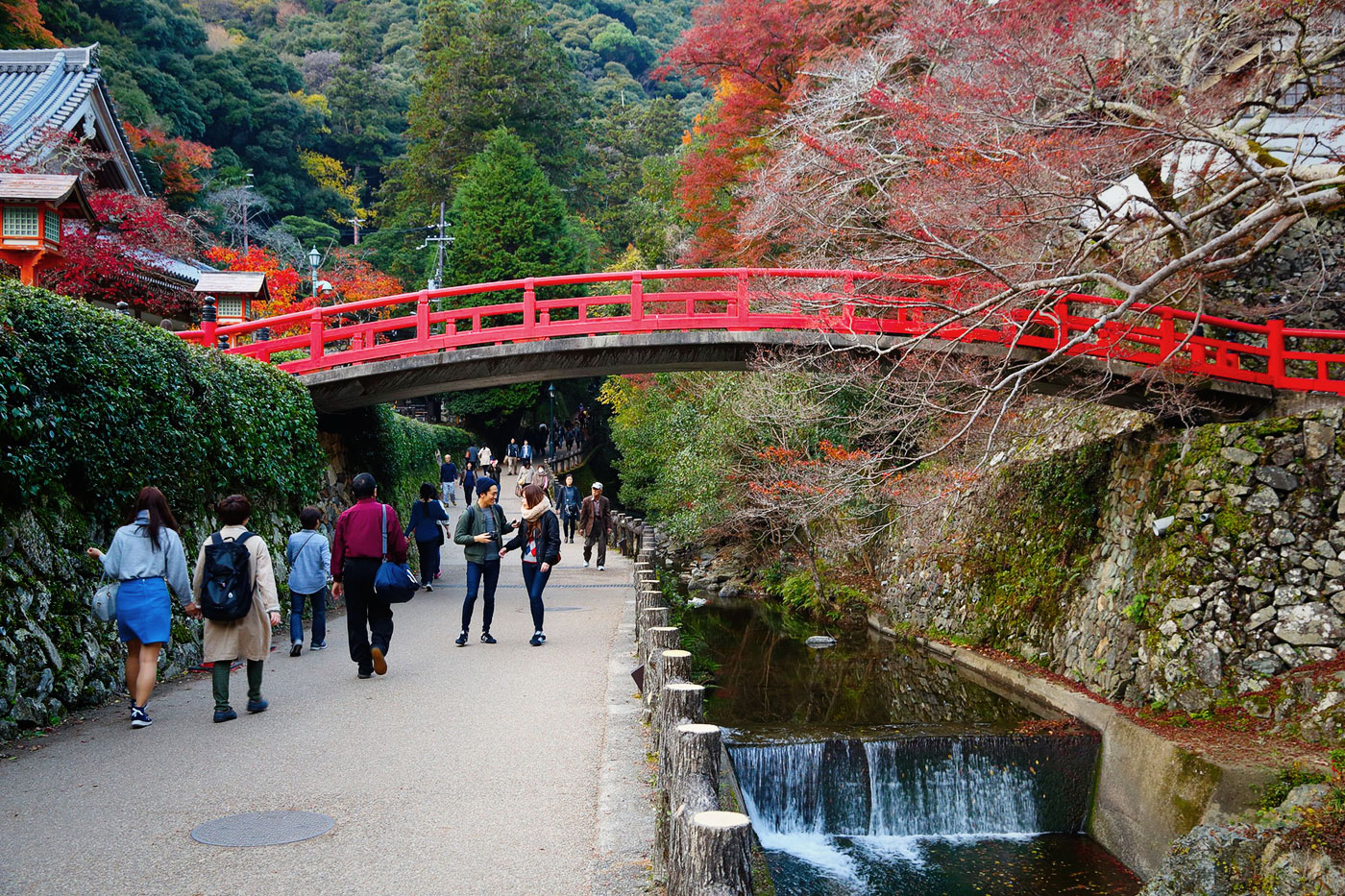
During the fall, they sell a snack called momiji tempura: battered and fried maple leaves.
About 100 km south of Osaka and Nara lies one of the most important centers of Shingon Buddhism in Japan, Mount Koya.
Since 819, when the monk Kukai chose it as a Buddhist settlement and requested the consecration of the mountain to Emperor Saga, more than 100 religious temples have been built there, including Kongobuji (Diamond Peak Temple), a school of Buddhist studies, and a cemetery, Okunoin.
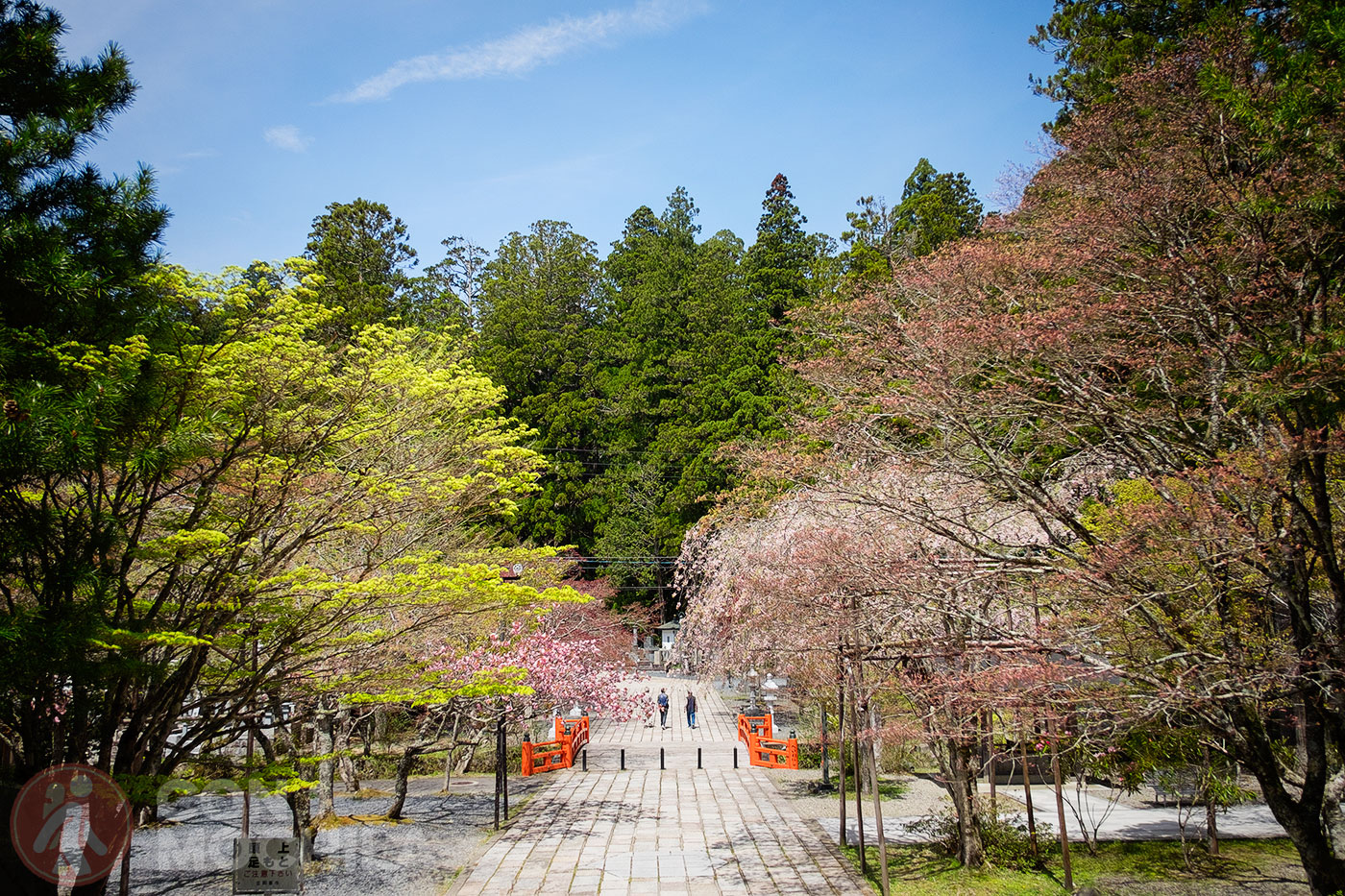
Once on the mountain, you can visit the temples or even stay overnight in one of them, as well as go on numerous hikes.
A cosmopolitan and maritime city, it is located north of Osaka Bay, just 30 km away. Opened to foreign trade in the mid-1800s, in the Kitano Ijinkan district you will find an area with 19th century buildings influenced by the Europeans who settled in the city at that time.
This is very striking since the architectural style is very different from the traditional Japanese style.
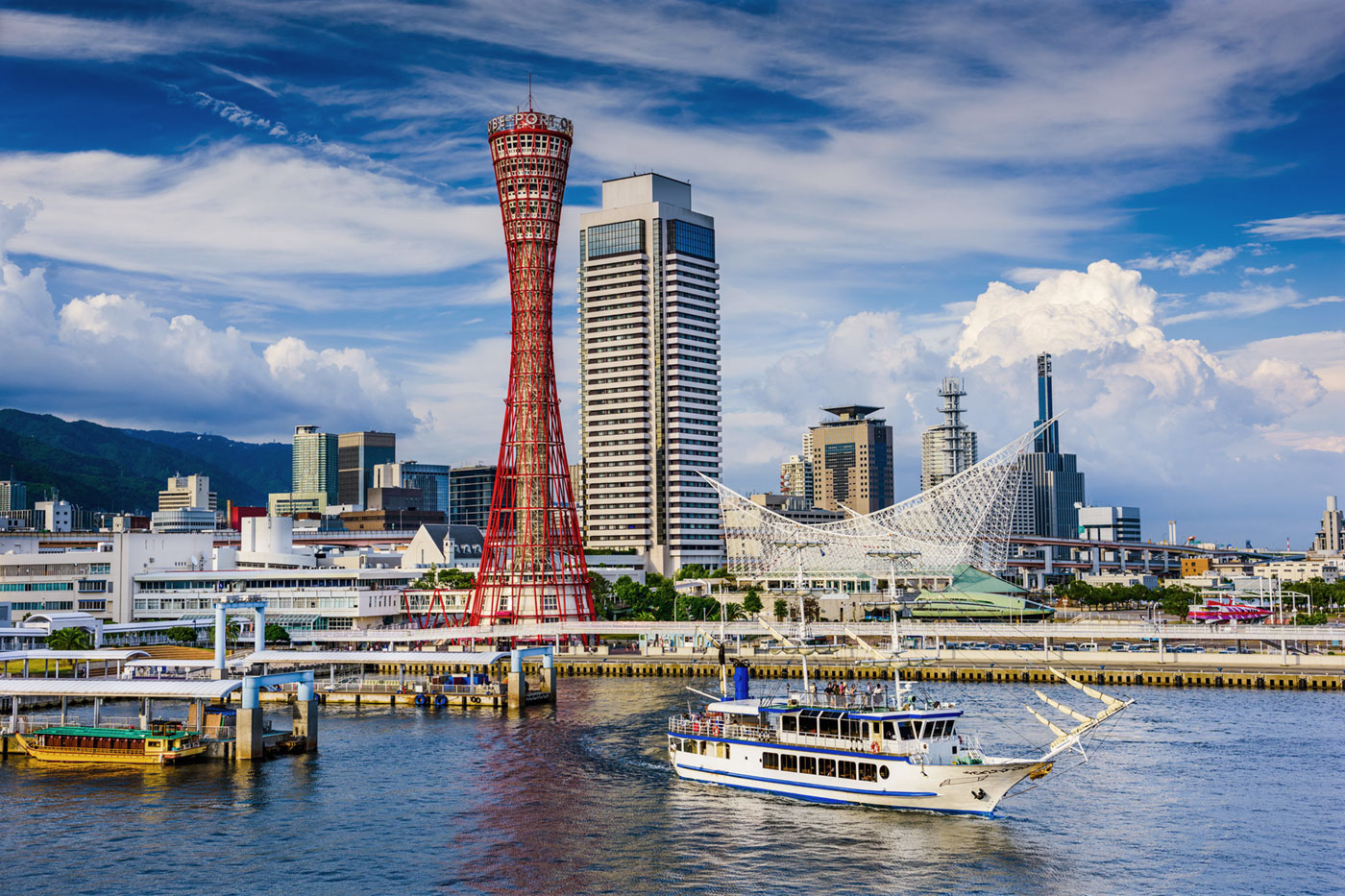
Kobe is also known for its sake production (you can visit some of the factories that produce it) and its beef, which is appreciated both inside and outside Japan. If you want to get to know Himeji, as well as some of the corners of Kobe, we recommend this full-day excursion to Himeji and Kobe from Osaka.
The beautiful city of Nara was the capital of Japan for a short period until 784. The number of temples, museums and gardens that line its streets and its eight World Heritage Sites mean that many travelers take the time to visit it even if it is just for a day trip.
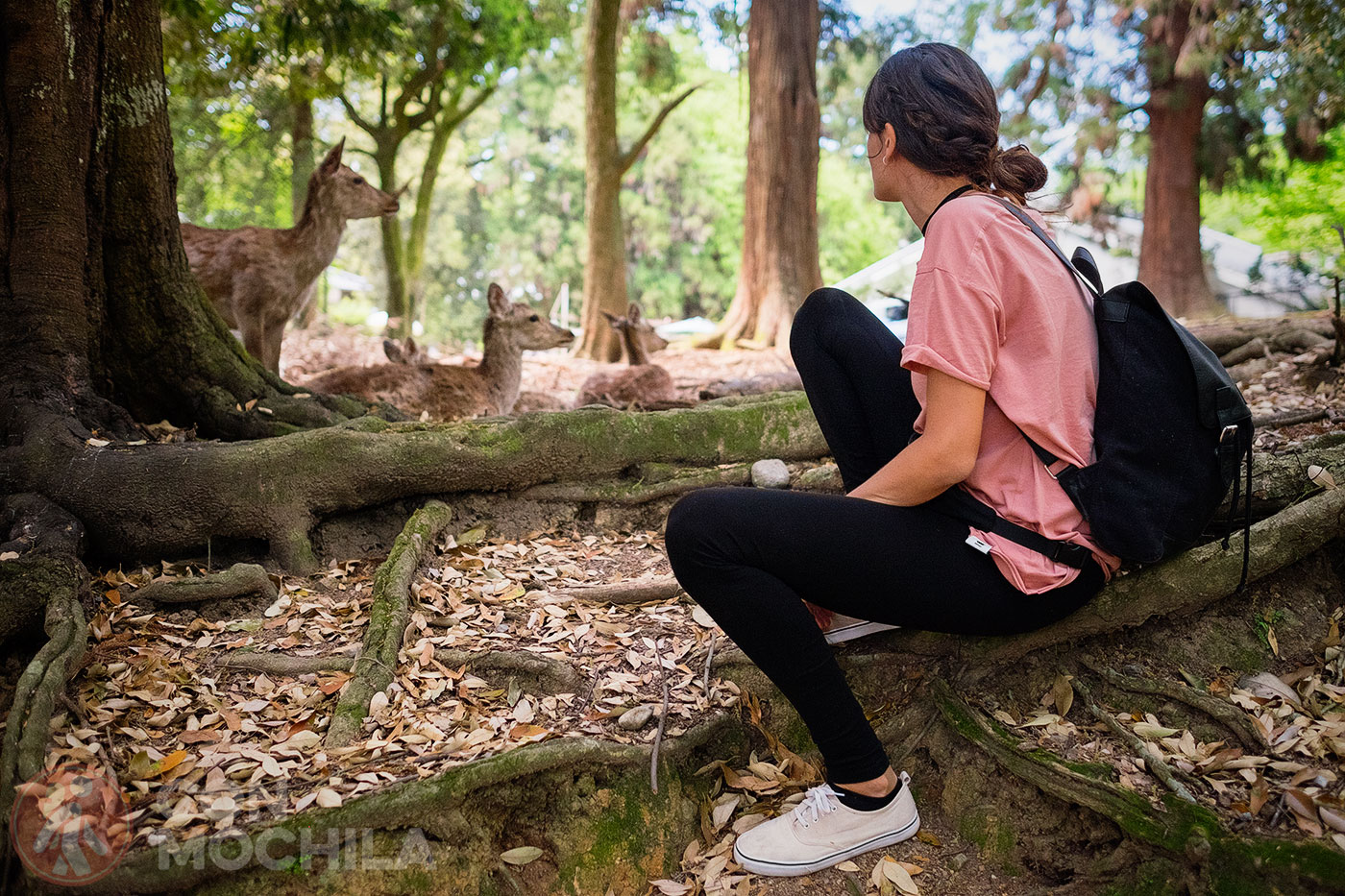
Nara is one of the most popular destinations in the country. Who hasn’t seen photos of tourists surrounded by deer?
We were looking for a place with good transport links and an affordable price. Osaka Guesthouse Midoriya is located in a quiet neighborhood just one stop from Osaka Castle. It has several mixed and female-only dormitories, Wi-Fi, a kitchen where you can prepare your own meals, as well as excellent cleanliness and a relaxed atmosphere.
There is also the hotel Business in Namba. The idea was for us to get into the hustle and bustle at a good price, and if you also want that then this hotel is perfect. It’s a building with several floors, small but well-used rooms with a shower and toilet in two separate spaces. There’s Wi-Fi in the common area (not in the rooms) and there’s a small bar with tables and sofas.
You can also take a look at the recommendations below:
As in many other cities in Japan, almost any place is good to eat in Osaka. Street stalls always offer us good food at a very good price.
At Kuromon Market you can try many varieties of local food: battera, okonomiyaki, takoyaki or kushikatsu in the endless restaurants and stalls inside.
Like other Japanese cities, public transport is generally very comprehensive and efficient. Osaka, being the third largest city in the country, connects all the tourist spots in the city.
Here are some of the many options for getting around Osaka:
Osaka has the second most extensive network of train and subway lines in the country after Tokyo. Once you get the hang of the vending machines (similar to those in Tokyo), everything becomes quite easy.
If you are planning to do some excursions around Osaka and visit other points of interest, the Kansai travel pass can be a good option for traveling around the Kansai region.
Many locals get around by bike; using the sidewalks or staying as far to the left as possible if pedaling on the road.
Unless you’ve gone out to dinner and are returning to your accommodation very late, it’s difficult to find a bus or metro station already closed. Therefore, it’s very unlikely that you’ll need to use apps like Uber or Grab. As you’ve seen, public transport covers almost the entire city, so make the most of it!
Click on the image and it will take you to a new Google Maps window with all the points of interest to travel around Osaka.